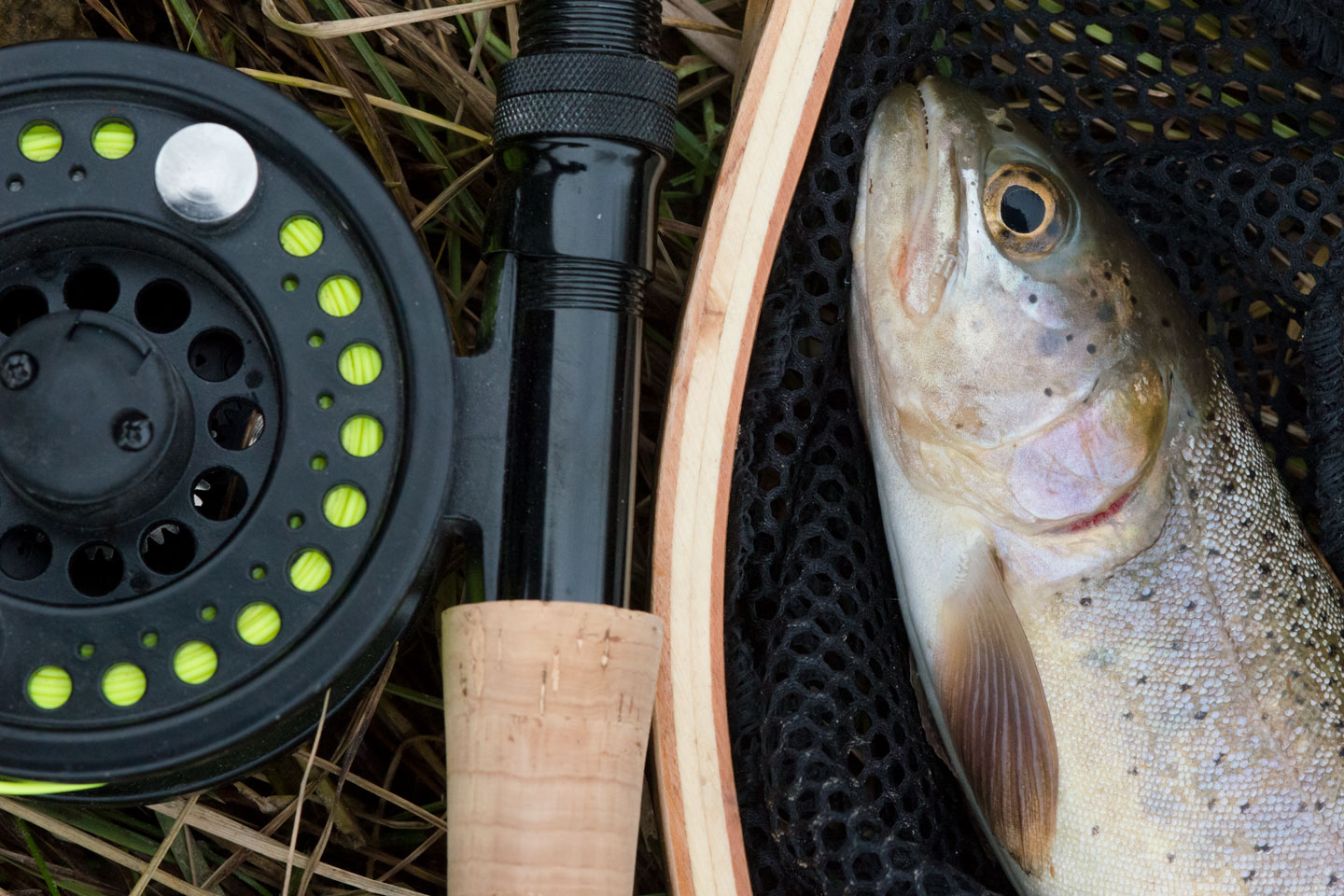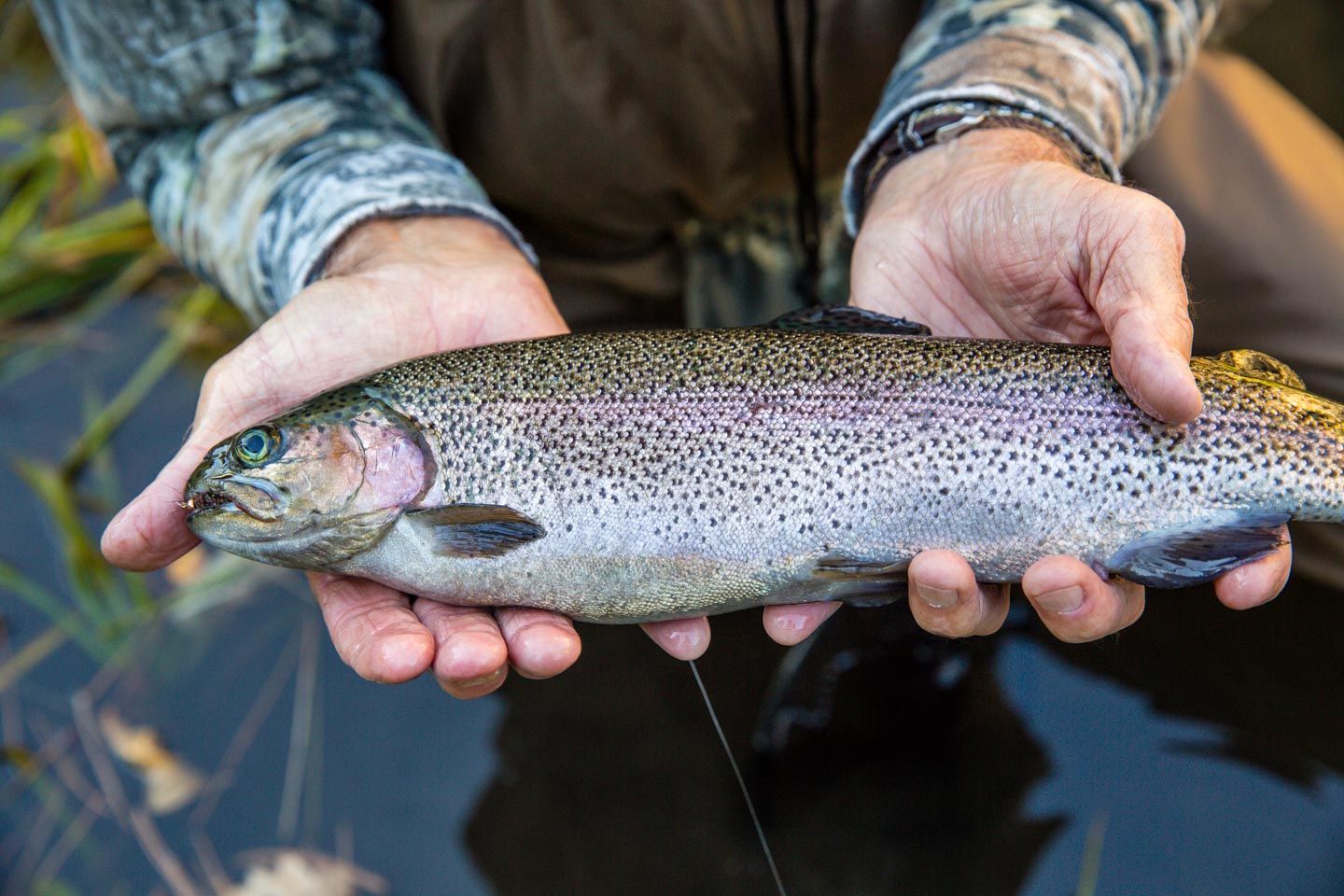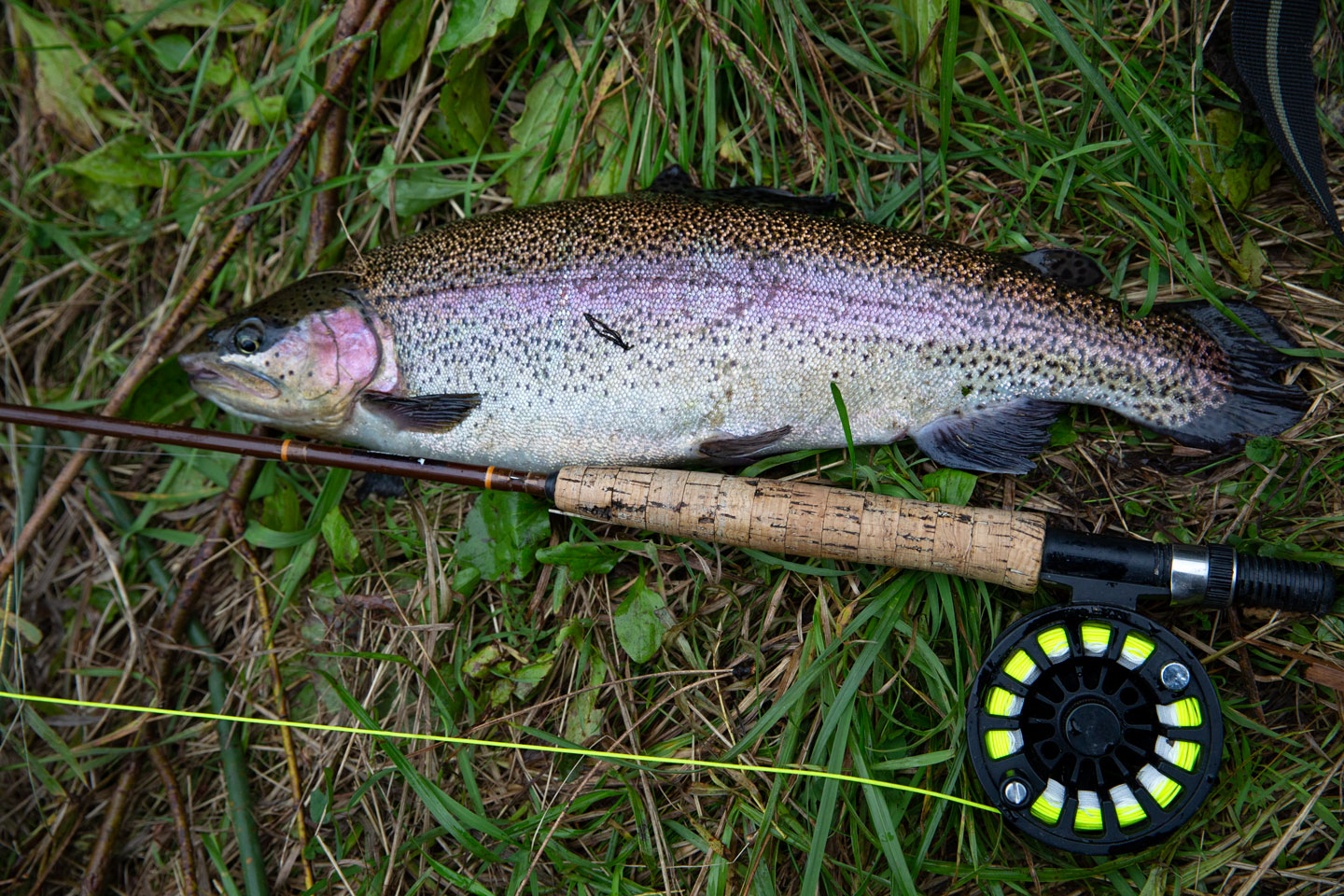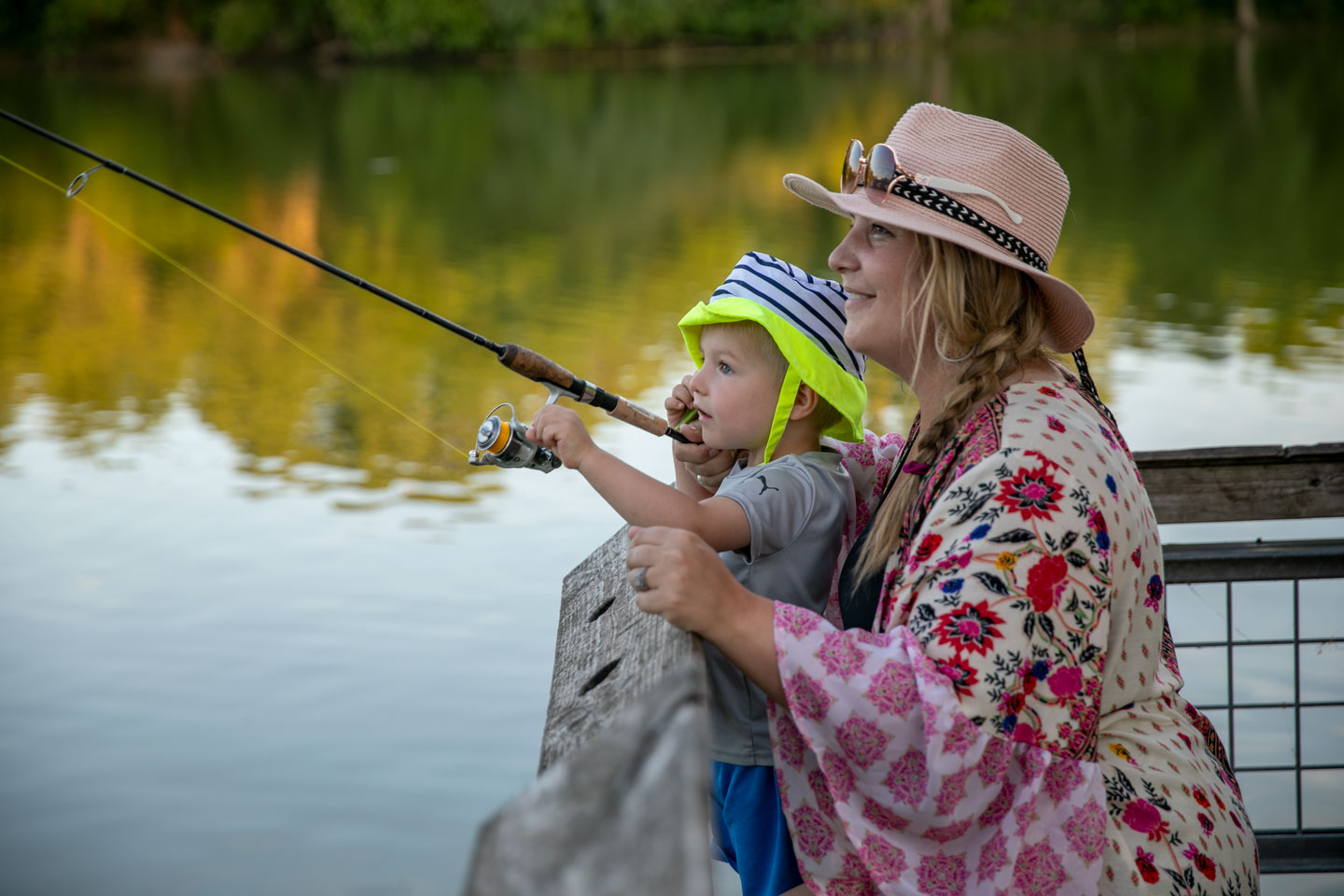Trout ID
Nebraska is home to four trout species — brook, brown, rainbow and cutthroat.
Salvelinus fontinalis
Also known as: brookie
Description: Non-native fish that requires cold (less than 70 degrees), well-oxygenated water. Front edge of lower fins lined in white and the tail fin is slightly forked. The midsection of sides has a few large black and red spots while the back has mottled or “wormy” lines. It is also characterized by traits typical to trout – small scales; a small, fleshy adipose fin on the midline of the back near the tail; and a small, triangular projection (the axillary process) at the upper end of the pelvic fin. It is our smallest trout and is considered a fall spawner – utilizing clean, gravelly riffles in streams. Diet primarily consists of aquatic and terrestrial insects and small fish.
Family: Trout
Type: Sport Fish
Range: Small coldwater streams in Pine Ridge
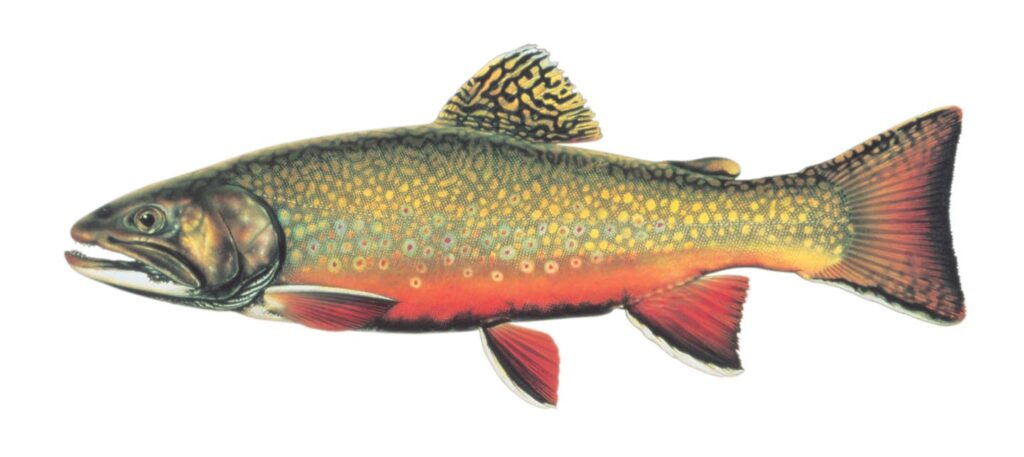
Salmo trutta
Also known as: German brown trout
Description: Non-native fish that requires cold (less than 70 degrees), well-oxygenated water. It has prominent spots on back and sides, often red or orange and accented with halos. The tail fin is not forked and generally free of spots. It also has typical trout characteristics – small scales, adipose fin on the midline of the back near the tail, and a small, triangular projection (the axillary process) at the upper end of the pelvic fin. Our largest trout and spawns in fall or early winter in streams containing clean, gravelly riffles. They are typically less vulnerable to fishing pressure than rainbows. They are somewhat of an opportunist – diet includes aquatic and terrestrial insects, snails, amphipods, crayfish, and typically more small fish than do rainbows.
Family: Trout
Type: Sport Fish
Range: Coldwater streams – primarily in western and north-central Nebraska.
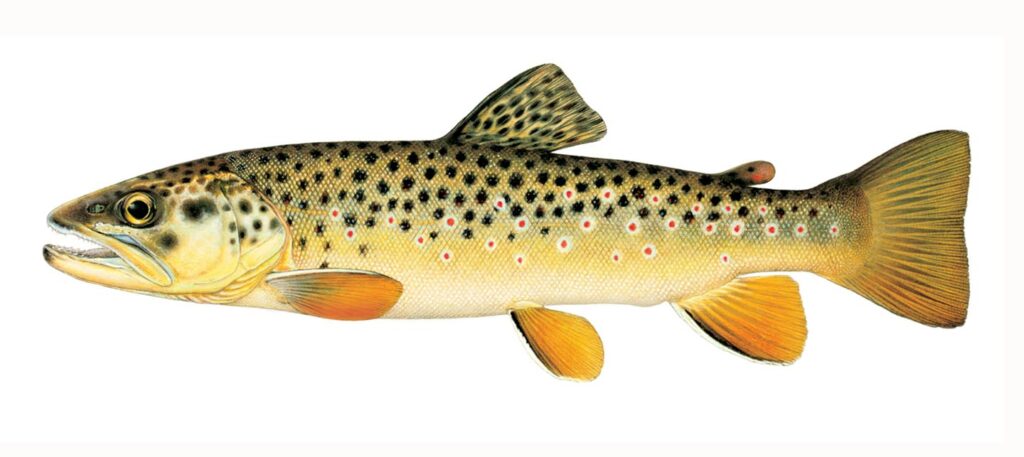
Oncorhynchus mykiss
Also known as: rainbow
Description: Non-native fish that requires cold (less than 70 degrees), well-oxygenated water. It tolerates slightly higher temperatures than other trout. It is speckled with small black spots on sides (no orange or reddish spots), back, and tail fin which is slightly forked. Sides also have a broad pinkish or red stripe. It also has small scales, an adipose fin on the midline of the back near the tail, and a small, triangular-shaped axillary process at the upper end of the pelvic fin. The bulk of its diet consists of aquatic and terrestrial insects, amphipods, crayfish, and small fish. It spawns from early winter to late spring, depending on genetic strain and availability of clean, gravelly riffles in streams. Readily caught by anglers.
Family: Trout
Type: Sport Fish
Range: Coldwater lakes and streams of western and north-central Nebraska; also stocked seasonally in eastern Nebraska lakes and streams as put-and-take fisheries.
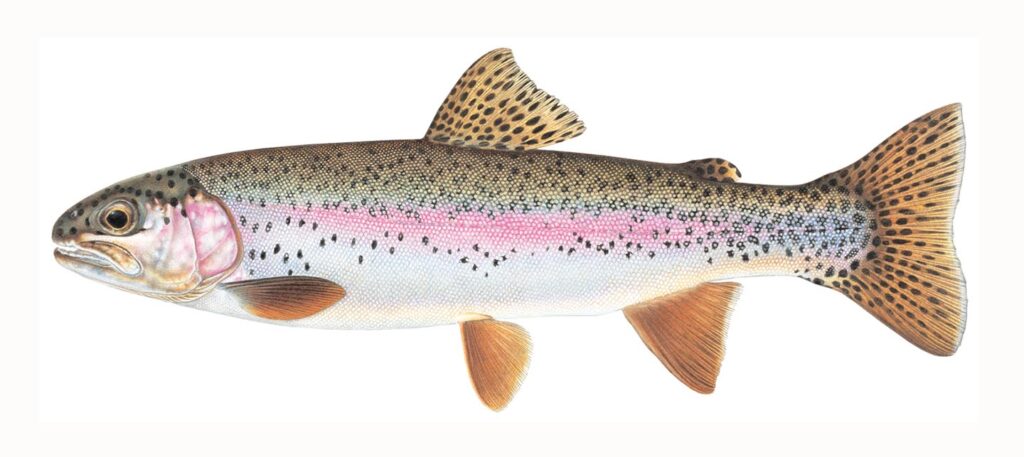
Oncorhynchus clarkii
Description: The cutthroat trout requires cold (less than 70 degrees) well-oxygenated water. Cutthroats look similar to rainbow trout, but can be distinguished by the linear red, pink and orange markings along the underside of the mandibles in the lower folds of the gill plates. These markings give them their name. Cutthroat trout have a diet similar to that of rainbow trout and consisting of aquatic and terrestrial insects, amphipods, crayfish, and small fish.
Family: Trout
Type: Sport Fish
Range: Coldwater lakes and streams of western Nebraska; also stocked seasonally in eastern Nebraska lakes and streams as put-and-take fisheries.
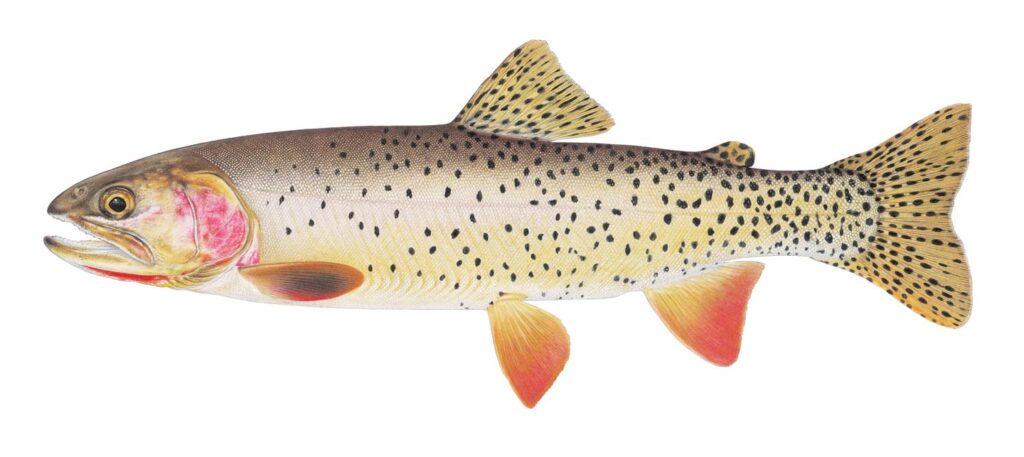
References
The Fishes of Nebraska by Hrabik, et. al (2015)
The Fish Book from NEBRASKAland Magazine (1987)
Related Content
Discover other fish species and resources to angling in Nebraska.
Fishing Permits
Purchase stamps, resident and non-resident fishing permits here.

